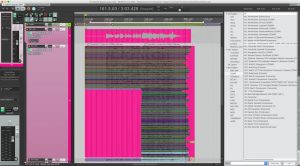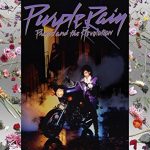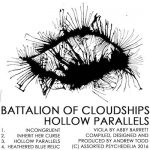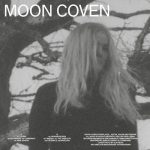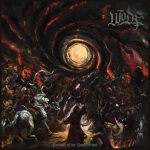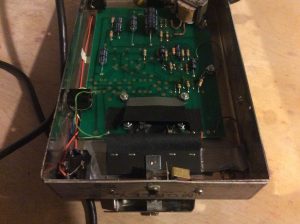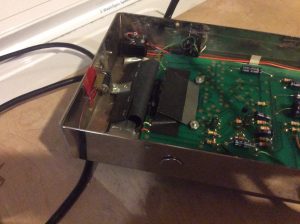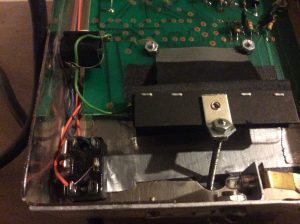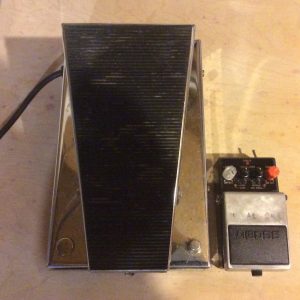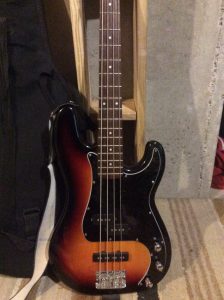27 Jan 2018, Saturday – Dark Satellites at minibar, Kansas City MO, with In’ Ere and Shoebox Money. Doors at 9, show at 9 (yes, allegedly), 21+, $5
-
Upcoming Dark Satellites Shows in KC/Lawrence
-
This is what editing 61 sax solo takes looks like
Wild.
I’m about halfway through updating the h&s mixes to kind of see where we’re at, post-recording-guitars. I think bass is up next, provided I can coordinate gear with the Mars Lights mixing process. (We need bass gear for that too, to re-amp my DI signals.)
-
The Best Music We Heard In 2017
Here is the best music we heard in the past year. Most, but not all, was released in 2017.
Top 14 (in random order)
Cosmic Ground, “Live” (2017) – “Live” under-sells this album; it’s an entirely new Cosmic Ground LP (five long pieces) that covers both classic and fresh territory in the realm of ambient, krautrock, and sequenced jams. https://cosmicground.bandcamp.com/album/cosmic-ground-live Leon Russell, “Best of Leon Russell” (1976) – Pulled out of a dollar bin somewhere as one of those artists I’ve always intended to get into, Leon Russell’s best caught me from the first note with a swampy bounce not unlike a real life Dr. Teeth & The Electric Mayhem. Prince and the Revolution, “Purple Rain Deluxe” (2017) – There’s a very good double LP’s worth of previously unreleased material in this reissue, like getting a brand new Prince album in 2017. Various edits and mixes of the original Purple Rain material and a DVD round out an excellent deluxe edition. Ka, “Honor Killed The Samurai” (2016) – Creating minimalist post-boom-bap is an avocation for Ka, one of Brooklyn’s (and the world’s) most distinct rappers. I picked up a bunch of his older stuff this year, too. Just know he doesn’t make it to the post office every day. http://brownsvilleka.com/ Howling Giant, “Black Hole Space Wizard: Parts 1 & 2” (2016, 2017) – Taken together these EPs form an epic listen with one foot in trad/proto metal (those organs!) and one in space. I can’t wait to hear what this group comes up with next; hopefully a record, or even a double. They’ve got that kind of potential. https://howlinggiant.bandcamp.com/album/black-hole-space-wizard-part-2 Battalion of Cloudships, “Hollow Parallels / Isolation Variations / Acceptance Live/Long Variations” (2016 / 2014 / 2013) – This ambient master is one of Lawrence, KS’ own and I occasionally buy whiskey from him. An LP is rumored to be finished and being shopped around to local labels. https://bigpharmarecords.bandcamp.com/album/hollow-parallels Moon Coven, “Moon Coven” (2016) – In the best way, this is RIYL/FFO Uncle Acid and Black Mountain. There’s something to be said for almost endlessly re-playable classic doom. https://mooncoven.bandcamp.com/album/moon-coven-3 Elder, “Reflections of a Floating World” (2017) – As Elder continues to push into their own kind of heavy prog, I have to admit I haven’t fully absorbed their latest record yet. And that’s part of what makes them a great listen; their songs have both immediacy, and incredible depth to explore. https://beholdtheelder.bandcamp.com/album/reflections-of-a-floating-world Jessie Ware, “Glasshouse” (2017) – Regaining her footing after a hit-and-miss sophomore record, Ware’s latest reminds me of nothing more than classic-era Mariah Carey (though obviously with her own voice shining through). The songs are very good and simply produced, with layers of background vocals fulfilling the roles of synths, guitars, and horns, placing the spotlight squarely on her pipes as they span from a whisper to full belt. Wode, “Servants of the Countercosmos” (2017) – Manchester melodic black metallers Wode get a bit proggy on “Servants…” but not in a weedely-wee sort of way. It’s in the atmosphere and the musical choices; here’s hoping they continue to stake out new sonic territory, and so much the better for us if they do it at their current pace. https://wode.bandcamp.com/album/servants-of-the-countercosmos The People’s Punk Band, “The People’s Punk Band” (2017) – I don’t think this record has gotten enough local love; it’s smart, it’s angry, and it sounds great. https://peoplespunkband.bandcamp.com/album/the-peoples-punk-band-ppb Mastodon, “Emperor of Sand” (2017) – Mastodon successfully re-incorporate the excursions and experiments of their last two albums with their classic prog-thrash, firing on all cylinders from start to finish. There’s not much else to say; this record is pure catharsis to play, including the theme of losing a family member to cancer. Blood Diamond, “Saviours” (2016) – These Dutch thrashers released one of my most-played albums of the year, a forging-together of melody and hellish riffs that stands up to close listening or accompanies work, recreation, or anything else as-needed. https://blooddiamondrocks.bandcamp.com/album/saviours Radiohead, “NOTOK” (2017) – The remastered “OK Computer” sounds great except for being a little loud to my taste; the collection of b-sides and unreleased tracks “NOTOK” effectively gives us a new late-90s Radiohead LP in 2017, which is an amazing gift. Honorable mention:
The War On Drugs “A Deeper Understanding” (2017)
Sufjan Stevens, “Planetarium” (2017)
Spoon, “Hot Thoughts” (2017)
Vokonis, “The Sunken Djinn” (2017)
Pallbearer, “Heartless” (2017)
The New Pornographers, “Whiteout Conditions” (2017)
Hyborian, “Hyborian: Vol. 1” (2017)
HAIM, “Something to Tell You” (2017)
The Afghan Whigs, “In Spades” (2017)
Kaitlyn Aurelia Smith & Suzanne Ciani, “FRKWYS Vol. 13: Sunergy” (2016) -
I’m Done
…with h&s guitars as of today. Now am headed to Denver Thursday to record an EP with Cory.
I’m going to take some time to get the h&s sessions in order and do household stuff I’ve been neglecting before starting the next major phase. (Not sure if the next major phase is bass or vocals.)
The sessions are kind of a mess because the drums were tracked in two sessions at the library six months apart, and my Reaper session template has evolved and improved since I started them (probably close to two years ago). I want to update the effects and routing as if the h&s sessions had been done in my current template, and that’s going to take a lot of note-taking and careful clicking. And I want to get some basic sax settings (compression, close/room mic balance) and drum settings (absolute phase, relative phase, panning) set. It will be worth it when it comes to mixing.
Aww yiss for milestones.
-
h&s Guitars; One Song To Go
Sometimes you have to put the keys down first though, to help you decide what guitar pedals to use.
This post brought to you by three #@$&^$% hours of fighting with WordPress.
-
Fixes
Cole gave me some cool vintage pedals to fix the other week, and I learned a lot working on this old Morley WVO Wah-Volume. As he gave it to me the wah effect worked, but the volume control didn’t.
Both effects are controlled by photoresistors. In the image above, you can see them peeking out from under the black hood that’s taped to the green PCB. These are variable resistors that serve the same function as potentiometers (or “knobs”).
Sidenote; you can see how the Morley company used one PCB, enclosure, and drilling template for several different models of pedal to save on production costs. Notice the empty pads where additional components could go on the PCB, and the metal buttons filling unused holes in the enclosure like the one below.
Both the wah and volume circuits are based on light from the little bulb on the left side of the photo above hitting those photoresistors (or not). (The bulb is on the other side of the bracket near the red electrical tape.)
The heel of the treadle is connected to that flap of black fabric. In the heel-down position, the fabric covers the opening of the hood (just heavy black paper and black masking tape); the photoresistors are in near-total darkness and therefore near their maximum resistance. This is shown in the photo below.
As the player pushes the treadle forward toward the toe-down position, the fabric flap is pulled back, gradually allowing light from the bulb to reach the photoresistors and decrease their resistance. The photo above shows the toe-down position.
So Cole’s pedal was, electrically, perfectly fine. The fabric flap had come un-taped from the inside of the enclosure (40-year-old masking tape will do that), so light was reaching the volume circuit’s photoresistor no matter the position of the treadle. Re-taping the flap to the enclosure solved the issue.
I literally fixed a pedal with duct tape.
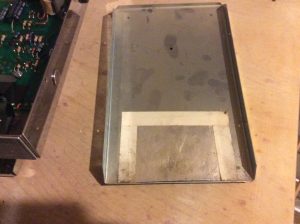
The bottom plate of the enclosure even has some reflective paper taped to it, to reflect the bulb’s light and strengthen the effect (see above).These old chrome Morleys are built like tanks, sound great, and have an extremely high cool factor. They’re also heavy, and giant; see below, next to a standard Boss pedal for scale.
-
New Bass Pickguard Day
My P-J bass came with a white pickguard, which I didn’t love, and 14-hole Squier pickguards are hard to come by. You almost have to order a custom one.
Well, if you’re looking at ordering a custom pickguard… why not ask your drummer, who does amazing paint jobs on all kinds of things, if he might be able to help you out?
I wanted something pretty subtle, so decided on flat black on a glossy black background. It took a while to think of a design I felt good about, but I settled on the abstract geometric/space thing from the Dark Satellites sticker. Boom. Has a nice, vaguely 70s/80s rubik’s cube / science fiction vibe. Perfect.
Matt nailed the execution. The design looks perfect, and the black-on-black is exactly what I’d hoped. The clear coat even makes it a little glossier than a standard pickguard, I think, like a little clue that it’s something special.
Custom wiring, custom pickguard; this thing is ready for adventure.
-
Don’t Mind Me
I just spent the weekend on the rock star couch knocking out h&s acoustic tracks, nothing to see here.
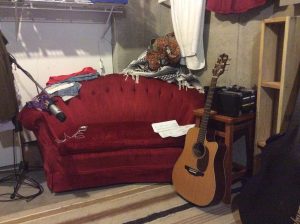
Two to go, then I’m back to the electric to finish up guitars. Hoping to have a thorough mix back to Scottie by 1/1/18. That would be finished drums, winds, and guitar, and (background info) moving the sessions over to my current mixing format. They were started a couple of years ago before the current digital mix template existed.Then: bass, real vocal tracks, backing vox and any final overdubs, mix, master… you get to hear it. Maybe late 2018? That’s optimistic but in range.
-
Watch A Full Mastering Job In 30 Minutes
Mastering guru Ian Shepherd, the main influence on my own mastering work, demonstrates mastering’s basic principles with three real songs in thirty minutes in this video.
If you’ve ever been curious about mastering, had any of your own work professionally mastered, or wondered if it was worth it, I think you’ll dig this.
-
Cory made us an email list
We’ll be emailing about just the big stuff, new releases and such.
There is a pop-up reminder, but you should only see it every 30 days. Please contact me directly or comment if you have concerns about that. Hate mail can go to:
Crokry Krobbiler
1 N 14er Mountain #14er
Near Denver, CO 98765
Thanks, Cory!
-
Adult Swim Eno/Shields
This new Brian Eno / Kevin Shields track from the Adult Swim singles series is really good:
-
This Box Is Magic
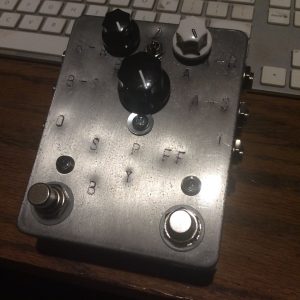 After… two and a half months, tonight the SPFFy Loop Selector lives and breathes.
After… two and a half months, tonight the SPFFy Loop Selector lives and breathes.I’ll get nerdy about it on mrfuriousaudio.com later; the upshot is that I wanted to build this before starting h&s guitar parts, and now I have.
Mic placement for said parts begins tomorrow night. I’m so happy to have this done. It’s been a good learning experience and I’m going to use the hell out of it but I’m beyond ready to make music for a while. Every h&s song will have its own guitar sounds, mostly because of this box.
I’m considering open-sourcing the design, because it’s a pretty gnarly build. Mostly because of drilling / fitting the hardware. I probably won’t make one more; it would be zero, or a bunch (enough to make making drilling templates worthwhile).
SPFFy!

